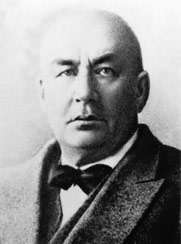Kalmyk Project

The Kalmyk Project was the name given to Soviet plans to launch a surprise attack on the northwest frontier of India via Tibet and other Himalayan buffer states in 1919-1920. It was a part of Soviet plans for destabilising Britain and the Western European powers through unrest in the Colonial Empire. British Indian intelligence sent agents, among them F. M. Bailey, to Central Asia to trace early Bolshevik designs on India.
Soviet Russia intended to nurture political upheaval in British India in its strategy against British imperialism. In 1919, she sent a diplomatic mission headed by an "orientalist" by the name of N.Z. Bravin. This was at the time that Afghanistan had seen a coup d'état that placed young prince Amanullah Khan in power and precipitated the Third Anglo-Afghan war. Bravin proposed to Amanullah a military alliance against British India and a campaign for which Soviet Turkestan would bear the costs.[1] These negotiations however failed to reach concrete conclusions, and the Soviet advances were also detected by British Indian intelligence. Among other works, this Bravin expedition established links at Herat with the Austrian and German remnants of the Niedermayer-Hentig expedition, and also liaised with the Indian revolutionaries of the Provisional Government of India in Kabul.[1][2]
A later plan considered by the soviets intended to raise a force of nearly forty thousand cavalry from Turkestan or the Urals which would advance to India through Afghanistan, with help from Afghan tribes who may rally against Amanullah.[3] However, these plans presented their own problems. Amongst other routes to India that were explored were plans to foment unrest in Tibet and the Himalayan buffer states of Bhutan, Sikkim, Nepal and Thailand and Burma through the Buddhist Kalmyk people, and use these places as a staging ground for revolution in India and the shortest route to Bengal which was the centre of the revolutionary movement in India.[4] This was to proceed under the cover of a scientific expedition under Indologist Fyodor Shcherbatskoy, and would arm the indigenous people in the North-East Indian region with modern weaponry before a regular supply could be arranged.[5] The Kalmyk project may have been the brainchild of Raja Mahendra Pratap who had led the Niedermayer-Hentig Expedition into Afghanistan in 1915 and subsequently established the nationalist Provisional Government of India at Kabul in December that year. Pratap liaised with the Nascent Bolshevik Government and the Kaiser after 1917 to explore the scopes of a joint Soviet-German invasion of India through Afghanistan. The most notable of these meetings was Pratap's audience with Lenin arranged by People's Commissariat for Foreign Affairs in 1919 when he met the latter with a group of Indian revolutionaries from the Berlin Committee.[6] The project had the approval of Lenin.[7] Pratap himself had a strong obsession with Tibet, and made efforts as early as 1916 to penetrate into the Himalayan Kingdom to cultivate anti-British propaganda. His efforts were resumed after his return from Moscow in 1919. He was close to Fyodor Shcherbatskoy and Sergey Oldenburg, and intended to participate in People's Commissariat for Foreign Affairs' planned expeditions to Tibet in summer 1919, and was privy to the organisation's designs in the region.[6]
However, the project was ultimately curtailed following the Czech uprising in the Trans-Siberian railway. Pratap himself set out alone to unsuccessfully pursue his goal in Tibet.[8]
References
- 1 2 Andreyev 2003, p. 83
- ↑ Andreyev 2003, p. 86
- ↑ Andreyev 2003, p. 87
- ↑ Andreyev 2003, p. 88
- ↑ Andreyev 2003, p. 91
- 1 2 Andreyev 2003, p. 96
- ↑ Andreyev 2003, p. 92
- ↑ Andreyev 2003, p. 97
- Andreyev, Alexandre (2003), Soviet Russia and Tibet: The Debacle of Secret Diplomacy, 1918-1930s, Brill, ISBN 90-04-12952-9.